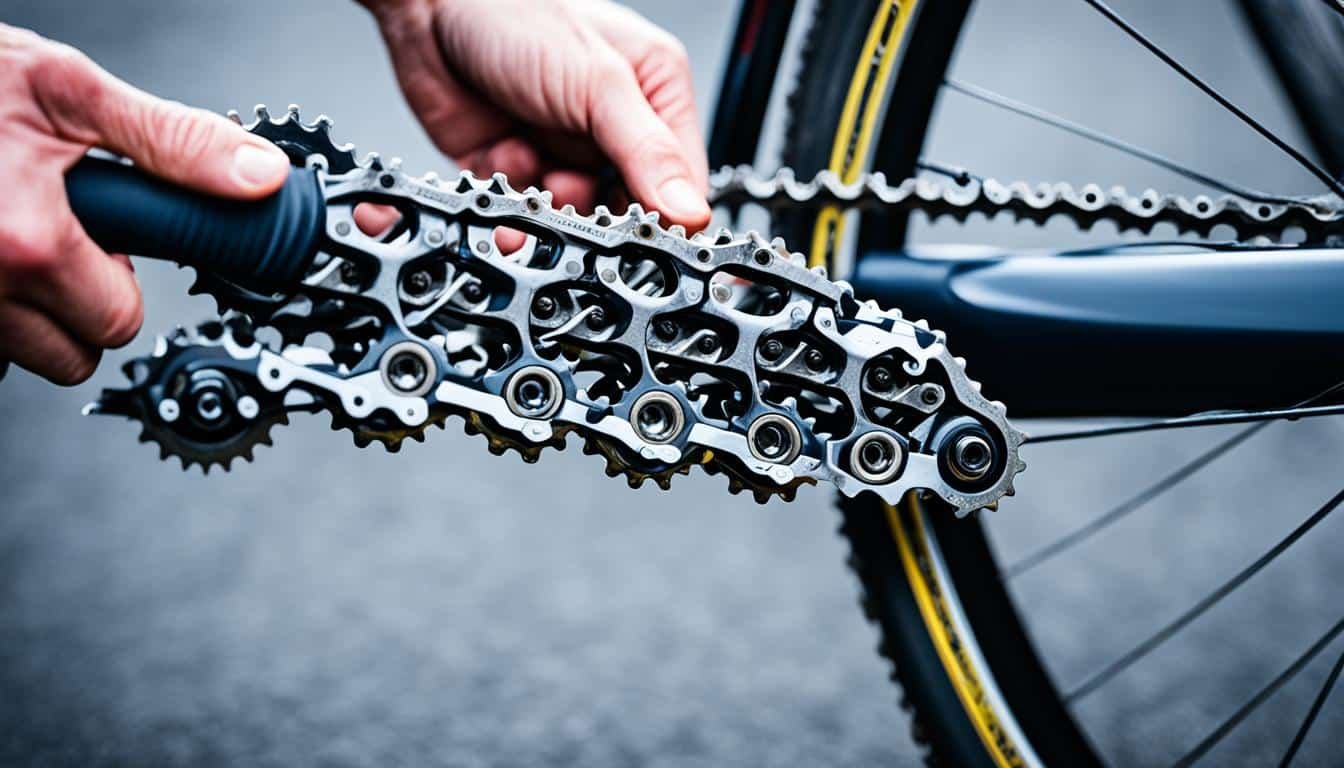UM Bike Safety Tips Ann Arbor has been recognized as a silver-level “Bicycle Friendly City” by the League of American Bicyclists. To ensure a safe cycling experience, it is important for cyclists, drivers, and pedestrians to know and follow the rules of the road, sidewalk, and bike lane. This includes staying alert at all times, following traffic laws and signals, being visible with lights and reflective clothing, and wearing a helmet. Additionally, it is essential to yield to pedestrians on sidewalks and paths. Registering your bike with the University of Michigan Police Department (UMPD) can deter theft, and using designated parking locations and quality locks can help protect your bike from being stolen.
Key Takeaways:
- Know and follow the rules of the road, sidewalk, and bike lane.
- Stay alert and follow traffic laws and signals.
- Be visible with lights and reflective clothing.
- Wear a helmet for head protection.
- Yield to pedestrians on sidewalks and paths.
Importance of Bike Maintenance
Proper bike maintenance is essential for a safe and enjoyable cycling experience. Regular care and attention to your bike will not only prolong its lifespan but also enhance your safety on the road. Here are some important bike maintenance tips that every cyclist should know:
- Check quick release levers: Before every ride, ensure that the quick release levers on your bike are tight. This will prevent any loose parts and reduce the risk of accidents.
- Test the brakes: Your brakes are one of the most critical components of your bike. Take a moment to test them before each ride to ensure they are working properly. Squeeze both brake levers and make sure the brakes engage smoothly and bring your bike to a complete stop.
- Check tire pressure: Maintaining the correct tire pressure is vital for optimal performance and safety. Use a reliable tire gauge to check the pressure regularly, and ensure it is within the recommended range specified on the sidewall of your tires.
- Inspect the chain: A well-maintained chain is essential for smooth shifting and efficient pedaling. Regularly inspect the chain for any signs of wear or damage. Clean and lubricate it whenever necessary to prevent rust and ensure a smooth operation.
Additionally, consider scheduling a bike tune-up at least once a year. Professional mechanics can thoroughly inspect your bike, make necessary adjustments, and identify any potential issues before they become major problems.
If you’re interested in learning more about bike maintenance or want to fix your bike yourself, you can also consider enrolling in bike maintenance classes offered by local bike shops or online resources. These classes can provide you with valuable knowledge and skills to keep your bike in top condition.
Benefits of Bike Maintenance
Regular bike maintenance offers several benefits:
- Improved safety on the road
- Enhanced performance and efficiency
- Extended lifespan of bike components
- Reduced risk of breakdowns and expensive repairs
By incorporating bike maintenance into your routine, you can enjoy a smooth and worry-free cycling experience.
Remember, a well-maintained bike not only keeps you safe but also ensures a more enjoyable ride.
So, take the time to care for your bike and keep it running smoothly. Your bike will thank you, and you’ll have a safer and more enjoyable cycling experience.
| Maintenance Task | Frequency |
|---|---|
| Check quick release levers | Before every ride |
| Test the brakes | Before every ride |
| Check tire pressure | Regularly, at least once a week |
| Inspect the chain | Regularly, at least once a month |
| Schedule bike tune-up | At least once a year |
Safe Riding Techniques
When it comes to cycling, adopting safe riding techniques is crucial for both your safety and the well-being of other road users. By following these tips, you can enjoy a smooth and secure biking experience.
Relax While Riding
One of the most important aspects of safe cycling is to remain calm and relaxed while you ride. By staying calm, you can better respond to any unexpected situations and maintain better control over your bike.
Use Both Brakes
When it comes to braking, it is essential to use both brakes simultaneously to maximize your stopping power. This technique allows for more even weight distribution and reduces the risk of skidding.
Scan Ahead
Always keep your eyes on the road ahead and scan for any potential obstacles or hazards. By anticipating what lies ahead, you can react in a timely manner and make safer decisions while riding.
Use Gears
Make sure to use your bike’s gears effectively, especially when tackling hilly terrains. By shifting to a lower gear, you can maintain a comfortable pedaling speed and reduce the strain on your muscles.
Share the Road
Remember to share the road with other road users, such as motorists and pedestrians. Be courteous and respectful, and always yield to pedestrians, as they have the right of way.
Follow Rules of the Road
Obey all traffic laws and regulations while cycling, just like any other road user. This includes riding in the same direction as traffic, stopping at all signs and lights, and using appropriate hand signals to communicate your intentions.
Avoid Blind Spots
Be aware of the blind spots of larger vehicles, such as buses and trucks. Stay out of these blind spots to ensure that the drivers can see you, and always assume that they may not be aware of your presence.
Use Hand Signals
Communicate your intentions to other road users by using proper hand signals. This helps to alert motorists and pedestrians to your next move and promotes safer interactions on the road.
Bicycle Safety in Different Weather Conditions
Cyclists often face different weather conditions while riding their bikes, and it’s crucial to adjust your biking habits accordingly to ensure safety on the road. Whether it’s a scorching hot day, a rainy afternoon, a chilly winter morning, or a snowy winter wonderland, being prepared and taking necessary precautions can make all the difference in your biking experience.
On hot days, it’s important to prioritize hydration and avoid overinflating your tires. Riding in extreme heat can cause high-pressure tires to expand and potentially explode, leading to accidents and injuries. Instead, ride with slightly lower tire pressure within the recommended range to prevent hazards.
When the rain starts pouring, it’s crucial to adapt your riding style. Take extra caution during turns, as surfaces like metal plates and tracks can become exceptionally slippery when wet. Riding slower and maintaining a safe distance from other vehicles is essential for preventing accidents. Consider equipping your bike with fenders to protect yourself from splashes and keep your clothes dry.
Cold days require additional attention to maintain comfort and safety. Before you set off, check your tire pressure as cold weather can cause a drop in pressure. Properly inflated tires provide better traction and stability on icy roads. Since daylight is limited during winter months, ensuring your bike lights are working correctly is also crucial for visibility and avoiding collisions. Layer your clothing appropriately to stay warm and consider using reflective gear to enhance visibility to other road users.
Snowy conditions pose unique challenges for cyclists. Before venturing onto snowy roads or paths, practice riding on residential streets or designated bike paths to familiarize yourself with the different conditions. Avoid riding over icy tracks and joints, as they can cause you to lose control of your bike. Be aware of freezing temperatures and reduced visibility and adjust your riding accordingly.
Tire Pressure Recommendations
Follow these guidelines for appropriate tire pressure based on different weather conditions:
| Weather Condition | Tire Pressure Recommendation |
|---|---|
| Hot Days | Slightly lower pressure within the recommended range |
| Rainy Days | Maintain regular tire pressure |
| Cold Days | Check and maintain regular tire pressure |
| Snowy Days | Check and maintain regular tire pressure |
Remember, adjusting your riding techniques and being prepared for different weather conditions are essential for ensuring your safety while biking. By following these tips and adapting to changing weather conditions, you can enjoy your ride and stay safe on the road.
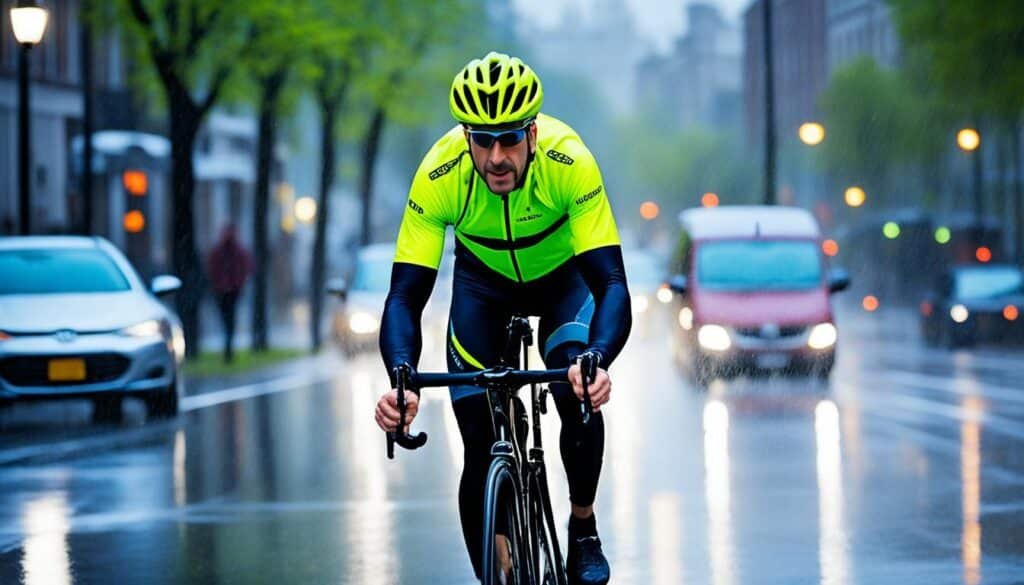
What to Do in Case of an Accident
In the unfortunate event of an accident, it is crucial to remain calm and follow the necessary steps to ensure your safety and protect your rights. Here is a bike accident procedure to guide you:
- Remain calm: Take a deep breath and try to stay composed. Panicking can make the situation more difficult to handle.
- Call the police: Dial emergency services or the non-emergency police line to report the accident. It is essential to have an official accident report on file.
- Gather driver’s information: Exchange information with the driver involved in the accident. Collect their license, insurance details, and license plate number.
- Take pictures: Use your phone or a camera to document the scene of the accident, the damaged vehicles, and your injuries, if any. These pictures can serve as crucial evidence later.
- Make a statement: When the police arrive, provide them with a complete account of what happened. Be honest and detailed in your statement.
- Seek medical attention: Even if you feel okay, it is important to seek medical attention as soon as possible. Some injuries may not be immediately apparent but can worsen over time.
- Document expenses: Keep track of all medical expenses related to the accident, including hospital bills, medication costs, therapy sessions, and any other relevant expenses.
- Contact a lawyer: Consider consulting with a lawyer who specializes in personal injury cases. They can provide guidance on your legal rights and help you navigate the claims process.
- Start an insurance claim: Contact the driver’s insurance company to start the claims process. Provide them with the necessary information and documents to initiate your claim.
Remember, each accident is unique, and it’s important to adapt the bike accident procedure to your specific situation. Seeking professional legal advice can provide you with personalized guidance and help protect your interests.
UM Bike Safety Resources
Ensuring your safety while biking on the University of Michigan (UM) campus and beyond is paramount. Fortunately, there are plenty of resources available to assist you in staying safe and informed. The UM Logistics, Transportation & Parking Department offers comprehensive guidelines for safe biking on campus, including detailed information on bike parking locations and abandoned bike removal procedures. They also provide valuable links to bike maps, cycling techniques, and tips for riding safely.
One excellent resource you can access is the PDF guide titled “Roadway Safety for All Users” from the Washtenaw Bicycling and Walking Coalition. This guide is designed to cater to the needs of cyclists, walkers, and drivers alike. It offers crucial information and best practices on navigating roadways safely and fostering a harmonious coexistence among different road users.
UM Bike Safety Resources Overview:
Resource Description Guidelines for Safe Biking on Campus User-friendly guidelines that outline safety recommendations, including proper biking etiquette and adherence to traffic laws. Bike Parking Locations Comprehensive information on designated bike parking areas across the UM campus. Abandoned Bike Removal Procedures for reporting and removing abandoned bicycles on campus. Bike Maps Access to detailed bike maps that indicate recommended bike routes and important cycling infrastructure. Cycling Techniques Expert advice and tips on proper cycling techniques to ensure a safe and pleasant biking experience. Tips for Riding Safely Essential safety tips addressing various biking scenarios and potential hazards. Bicycle Clubs and Advocacy Organizations Links to local bicycle clubs and advocacy organizations that can provide additional support and resources.
By utilizing these UM bike safety resources, you can equip yourself with the necessary knowledge to navigate the streets confidently and responsibly. Whether you are a seasoned cyclist or just starting your biking journey, these resources will prove invaluable in ensuring your safety and enhancing your overall biking experience.
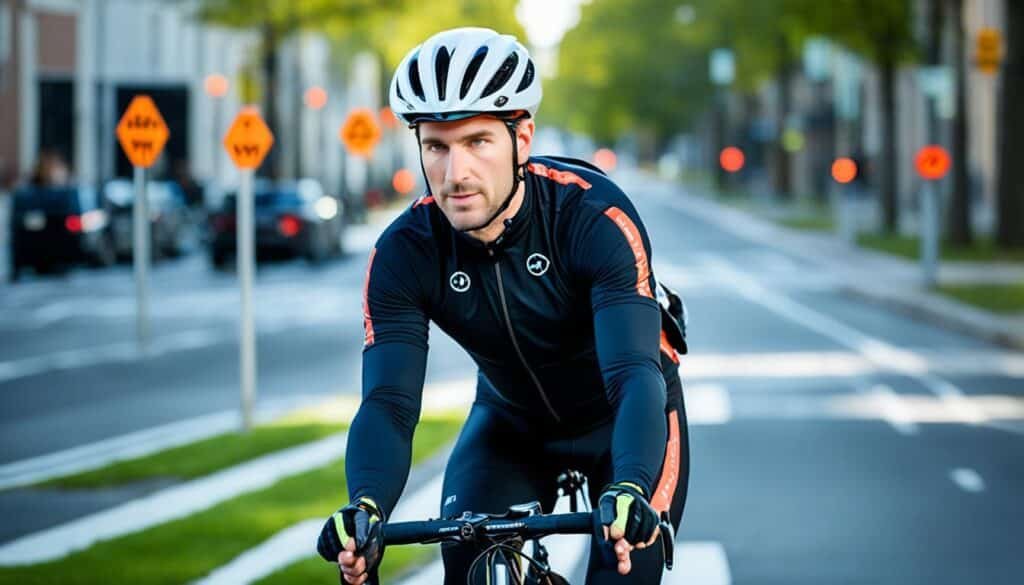
Preventing Bicycle Theft
Bicycles are frequent targets for theft, especially on college campuses. To protect your bike from being stolen, there are several effective measures you can take.
- Register your bike: One of the first steps in bike theft prevention is registering your bike with the University of Michigan Police Department (UMPD). By registering your bike, you increase the chances of recovering it in the event of theft and discourage potential thieves.
- Utilize designated parking locations: When parking your bike, make sure to use designated bike racks or parking locations provided by the university. Avoid locking your bike to objects other than bike racks, as it may encourage theft.
- Invest in quality locks: A quality lock is essential to deter thieves. Consider investing in a hardened steel U-lock, which provides higher security compared to cable or chain locks. Secure your bike by locking it through the frame and at least one wheel.
- Secure bike accessories: Expensive bike accessories, such as lights or saddlebags, can also be targets for theft. Remove or securely fasten these accessories when parking your bike to minimize the risk.
By following these bike theft prevention measures, you can significantly reduce the chances of your bike being stolen. Remember, taking proactive steps to protect your bike not only ensures your investment is safe but also promotes a safer cycling environment on campus.
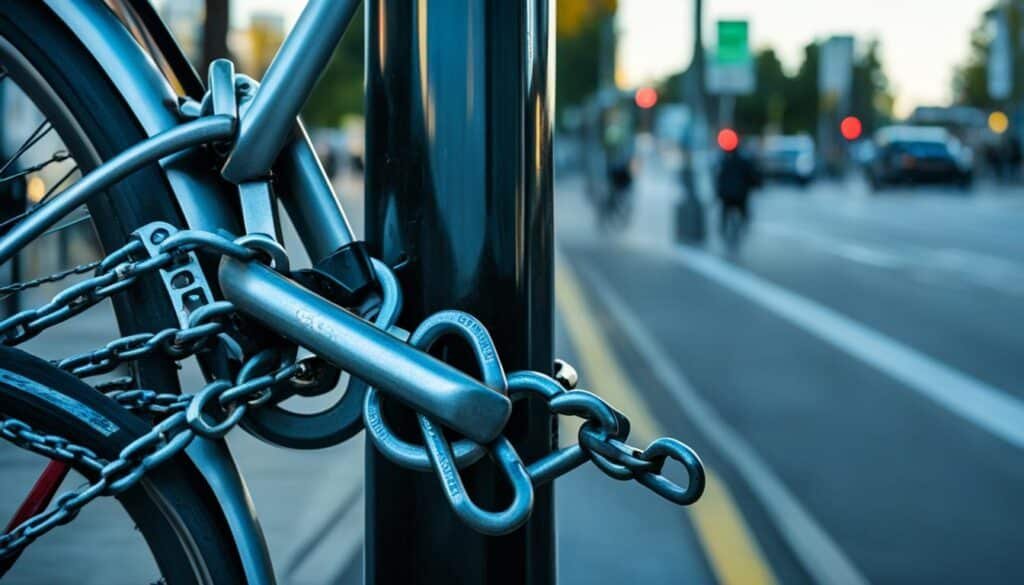
| Prevention Measures | Description |
|---|---|
| Register your bike | By registering your bike with UMPD, you discourage thieves and increase the chances of recovery |
| Utilize designated parking locations | Lock your bike to designated bike racks or parking locations to deter theft |
| Invest in quality locks | Use a hardened steel U-lock to secure your bike through the frame and at least one wheel |
| Secure bike accessories | Remove or securely fasten expensive bike accessories when parking your bike |
Importance of Visibility and Safety Gear
When riding a bike, being visible on the road is crucial for your safety. By enhancing your visibility, you reduce the risk of accidents and help other road users anticipate your movements. Here are some essential tips to improve your visibility:
Use Bike Lights
Ensure your bike is equipped with appropriate lights to increase visibility, especially during low-light conditions. Place a white light at the front of your bicycle and a red light at the back. These lights act as a signal for other road users, making your presence known and reducing the chance of collisions.
Wear Reflective Clothing
Wearing bright or reflective clothing significantly enhances your visibility, making it easier for others to spot you from a distance. This is particularly important during dusk, dawn, or night rides when visibility is reduced. Reflective clothing, such as vests, jackets, or accessories, reflects light and helps you stand out on the road.
Always Wear a Helmet
Protecting your head is of paramount importance while riding a bike. Wearing a properly fitted helmet can prevent serious head injuries in case of a fall or collision. Make sure to securely fasten the helmet straps and inspect it regularly for any signs of damage.
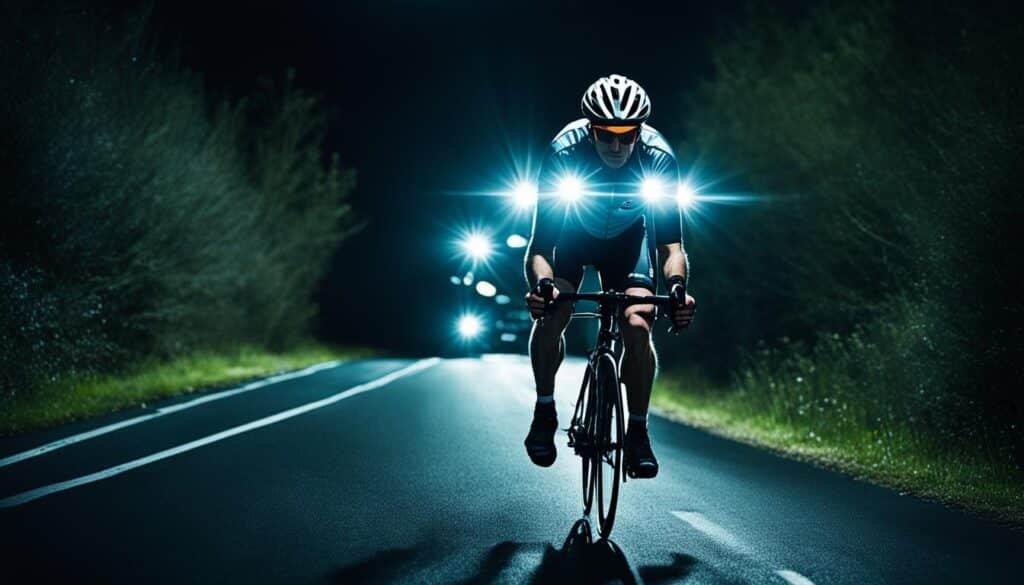
Helmet Safety Checklist
| Helmets Safety Checklist |
|---|
| Check for cracks or damages to the helmet shell. |
| Ensure the helmet straps are not worn out and are securely fastened. |
| Verify that the helmet fits snugly on your head without being too tight or too loose. |
| Inspect the helmet’s foam padding for deterioration. |
| Replace your helmet after any significant impact or after a few years of use. |
By prioritizing visibility and investing in safety gear, you can significantly reduce the risk of accidents and enhance your overall safety on the road. Remember, being seen is the first step towards being safe.
Sharing the Road and Traffic Navigation
When it comes to cycling, sharing the road with vehicles and understanding the rules of the road are crucial for a safe biking experience. By following proper protocols and practicing good road etiquette, cyclists can minimize risks and ensure harmonious coexistence with other road users.
One essential aspect of sharing the road is yielding to pedestrians and other vehicles. Always prioritize the safety of pedestrians by yielding to them on sidewalks and paths. When cycling on the road, adhere to traffic laws and regulations, just like any other vehicle. This includes stopping at traffic signals, obeying speed limits, and using bike lanes when available.
Bike lanes provide designated areas for cyclists, ensuring a safer and smoother ride. Stick to the designated bike lane whenever possible, especially if it runs parallel to the road. By doing so, you minimize the risk of accidents and conflicts with vehicles. Additionally, using bike lanes helps establish a predictable traffic flow and encourages a respectful sharing of the road.
Also Read:- Essential UM Motorcycle Accessories For The Modern Rider
Understanding right-of-way rules is another crucial component of sharing the road. Always yield to vehicles and pedestrians that have the right of way. This includes giving way to vehicles at intersections and crosswalks and allowing pedestrians to cross before proceeding. By respecting the right of way, you contribute to a safer and more organized flow of traffic.
Hand signals play a vital role in communicating your intentions to other road users. By using hand signals, you can indicate your turns, stops, and lane changes, allowing drivers and pedestrians to anticipate your actions. Familiarize yourself with the proper hand signals and use them consistently to enhance communication and avoid confusion on the road.
Bicycle Hand Signals
| Signal | Description |
|---|---|
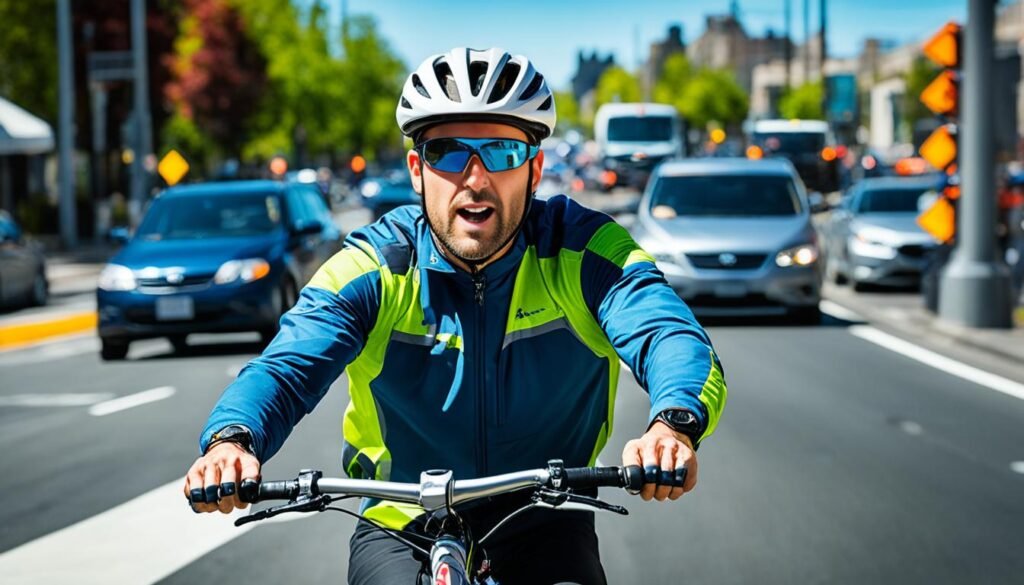 |
Left Turn: Extend the left arm horizontally to the side. |
| Right Turn: Extend the left arm upward, forming an “L” shape. | |
| Stop: Extend the left arm downward, with the palm facing back. |
Familiarize yourself with local traffic laws to ensure safe navigation while cycling. Different regions may have specific regulations and road rules, so understanding the local requirements is essential. By being knowledgeable about traffic laws, you can navigate the roads confidently and responsibly.
Overall, by sharing the road with vehicles, following the rules of the road, using bike lanes, respecting right-of-way, and using hand signals, cyclists can contribute to a safer and more efficient traffic environment. Promoting this culture of awareness, mutual respect, and adherence to traffic rules benefits all road users and enhances the biking experience for everyone.
Bicycle Safety Tips for Urban Environments
Cycling in urban environments presents unique challenges and potential dangers. To ensure your safety and the safety of others on the road, it is essential to stay alert, follow traffic laws, and take necessary precautions. By understanding the dangers of cycling in cities and adopting good safety practices, you can enjoy a safer biking experience.
Staying Alert and Following Traffic Laws
When cycling in urban areas, it is crucial to stay vigilant and aware of your surroundings at all times. Keep these tips in mind:
- Obey all traffic signals and signs.
- Ride in the same direction as traffic.
- Use designated bike lanes whenever possible.
- Yield to pedestrians and give them the right of way.
- Make eye contact with drivers before crossing intersections.
Avoiding Distractions
Distracted cycling can be dangerous in urban environments. Avoid using electronic devices, such as smartphones or headphones, while riding. Stay focused on the road and your surroundings.
Understanding Bike Lane Use
Bike lanes provide a designated space for cyclists, enhancing safety. Here are some guidelines to remember when using bike lanes:
- Ride within the bike lane boundaries.
- Be aware of parked cars opening their doors.
- Watch for vehicles crossing the bike lane when turning.
Awareness of Potential Dangers
Urban environments present specific hazards that cyclists should be aware of:
- Watch for cars turning right across your path, known as right-hook situations.
- Be cautious of blind spots of larger vehicles, such as buses and trucks.
- Stay visible by using bike lights, wearing reflective clothing, and using reflective gear.
| Urban Bike Safety Tips | Dangers of Cycling in Cities |
|---|---|
| 1. Stay alert at all times. | 1. Right-hook situations when cars turn across your path. |
| 2. Follow traffic laws and signals. | 2. Blind spots of larger vehicles. |
| 3. Proper use of bike lanes. | 3. Potential door opening by parked cars. |
| 4. Avoid distractions while cycling. | 4. Limited visibility in urban environments. |
Importance of Pedestrian Safety and Bike Etiquette
Respecting pedestrians’ right of way is crucial for maintaining a safe and harmonious cycling environment. When sharing sidewalks and paths, it is essential to yield to pedestrians, giving them priority and ensuring their safety. By practicing bike etiquette, you can contribute to a positive cycling experience for everyone.
- Slowing Down: When you approach pedestrians, slow down your speed to reduce the risk of accidents. This allows both you and the pedestrians to navigate the shared space safely.
- Announcing Your Presence: Use a friendly verbal cue or a bell to let pedestrians know you are nearby. This helps avoid startling pedestrians and allows them to anticipate your presence.
- Keeping a Safe Distance: Maintain a safe distance from pedestrians, ensuring that you have enough space to maneuver if necessary. This helps prevent collisions and promotes a sense of comfort for pedestrians.
- Obeying Pedestrian Signals: Respect pedestrian signals, crosswalks, and designated pedestrian areas. This ensures that pedestrians can safely cross the road without any interference from cyclists.
By practicing cautious riding and respecting pedestrians’ right of way, you contribute to a cycling culture that promotes safety and consideration for others. Let’s create a community where cyclists and pedestrians coexist harmoniously.
Conclusion
Staying safe while biking on UM’s campus and beyond is crucial for the well-being of cyclists, drivers, and pedestrians. By following UM bike safety tips, maintaining your bike, and understanding traffic laws, you can enhance your safety and the safety of others on the road. Registering your bike, using quality locks, and being visible are effective measures to prevent theft. Remember to always wear a helmet and practice safe riding techniques. With these precautions in mind, you can confidently navigate the streets and enjoy a safe biking experience.
FAQ
What are some important UM bike safety tips?
Some important UM bike safety tips include staying alert at all times, following traffic laws and signals, being visible with lights and reflective clothing, wearing a helmet, and yielding to pedestrians.
Why is bike maintenance important?
Bike maintenance is important to ensure your bike is in good working condition and safe to ride. Regular maintenance checks, such as testing brakes, checking tire pressure, and inspecting the chain, can help prevent accidents and improve your riding experience.
What are some safe riding techniques for cycling?
Some safe riding techniques for cycling include relaxing while riding, using both brakes simultaneously, scanning ahead for potential hazards, using gears to pedal at a comfortable pace, sharing the road with other users, yielding to pedestrians, and following the rules of the road.
How should I stay safe when biking in different weather conditions?
To stay safe when biking in different weather conditions, it is important to adjust your riding accordingly. This includes staying hydrated and avoiding overinflating tires on hot days, riding slower and being cautious on rainy days, dressing in layers and ensuring proper lighting on cold days, and practicing caution and avoiding hazardous areas on snowy days.
What should I do in case of a bike accident?
In case of a bike accident, it is important to remain calm, move out of the road to a safe location, call the police, gather the driver’s information, take pictures of the scene and your bike, make a complete statement to the police, seek medical attention, document related expenses, contact a lawyer if necessary, and start an insurance claim.
Where can I find UM bike safety resources?
You can find UM bike safety resources, including guidelines, maps, links to bicycle clubs and advocacy organizations, and more, through the University of Michigan Logistics, Transportation & Parking Department.
How can I prevent my bike from being stolen?
To prevent your bike from being stolen, you can register your bike with the University of Michigan Police Department, use designated parking locations, lock your bike with quality locks, and secure expensive bike accessories when parking your bike.
Why is visibility and safety gear important when biking?
Visibility and safety gear, such as bike lights and reflective clothing, are important to make cyclists more visible to other road users, especially in low-light conditions. Wearing a helmet is crucial for protecting your head in case of a fall or collision.
How should I navigate traffic and share the road while cycling?
While cycling, it is important to follow the rules of the road, yield to pedestrians, use bike lanes when available, and use hand signals to communicate your intentions to other road users. Understanding right-of-way rules and familiarizing yourself with local traffic laws can help you navigate traffic safely.
What are some cycling safety tips for urban environments?
Some cycling safety tips for urban environments include staying alert at all times, following traffic laws and signals, using bike lanes when available, avoiding distractions, and being cautious of potential dangers, such as blind spots of larger vehicles and opening car doors.
Why is pedestrian safety and bike etiquette important?
Respecting pedestrians’ right of way and practicing bike etiquette is important for maintaining a safe and harmonious cycling environment. Yielding to pedestrians, slowing down when approaching them, and announcing your presence when passing are all important aspects of pedestrian safety and bike etiquette.
